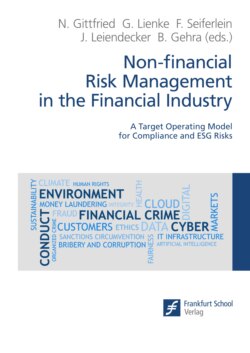Читать книгу Non-financial Risk Management in the Financial Industry - Группа авторов - Страница 13
На сайте Литреса книга снята с продажи.
1.7 Using data, IT and artificial intelligence
ОглавлениеToday, excellent non-financial risk management is heavily supported by an adequate data and IT architecture. Chapter 10 starts with an outline of the associated challenges, ranging from heterogeneous (and partially unavailable) non-financial risk data and fragmented responsibilities to partially-integrated IT applications. These challenges can be addressed by defining a comprehensive strategy, creating full transparency of the IT architecture and aligning with the required data architecture. This can subsequently be translated into a short- and long-term roadmap towards a more public cloud-based or on-premises data platform.
Chapter 11 describes the data governance required to facilitate an effective NFR management. Historically, data governance has focused on “financial risk” thereby often leaving non-financial risk aside. Yet, an effective non-financial risk data governance system can be established by leveraging existing data governance frameworks. This will entail a clear assignment of roles and responsibilities (including non-financial risk data officers, data owners, stewards and custodians), implementing concrete use cases, scaling-up as well as defining a comprehensive data catalogue and supporting technologies. The resulting data governance should subsequently be integrated into existing governance structures on both entity and group levels.
Accelerated by COVID-19, the financial sector is experiencing a substantial digital transformation of business and operating models, mainly to cater for changing customer expectations and behaviour and to optimise the efficiency of financial operations. Digitisation multiplies the volume of available data and opens opportunities for the use of artificial intelligence (AI) and other forms of sophisticated analytics in non-financial risk management. Concurrently, regulatory expectations on the financial sector’s uses of AI are increasingly demanding and must be managed to withstand regulatory scrutiny. Chapter 12 examines how AI can help improve non-financial risk management and contains two use cases for AI usage: financial crime prevention and the prevention of market abuse.
